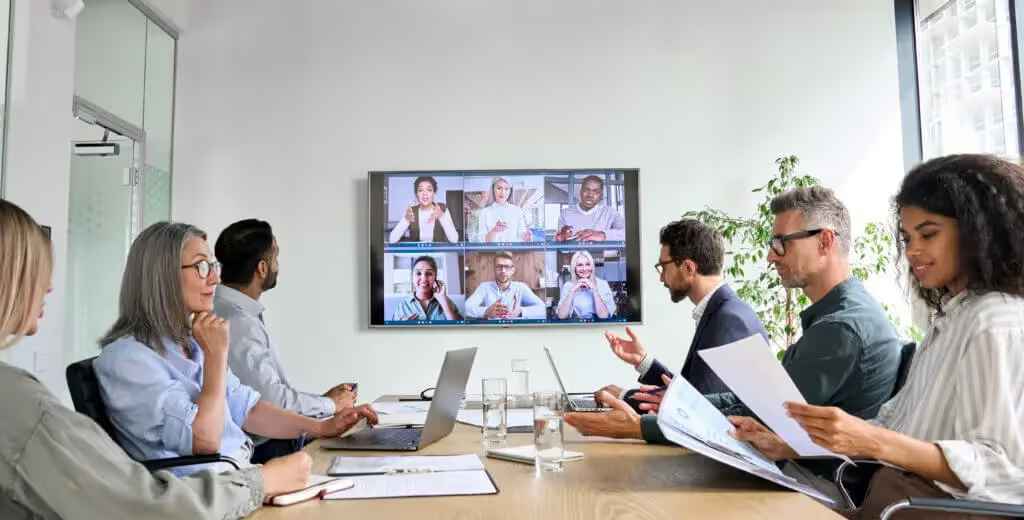Professional Development
Professional development programs are essential for companies that need to maintain competitive levels of skill for their employees. It’s hard to over-exaggerate the benefits that result from this type of learning and development: greater job satisfaction, a stronger team, boosted retention, and of course the business’ bottom line. To optimize the process of running professional development courses, HR should look to talent development platforms, rather than shoot in the dark.
What Is Professional Development?
Professional development is the initiative organized by HR/L&D to improve the professional skills of employees.
In turn, “professional skills” are similar to workplace skills because they enable an employee to perform their tasks. The difference is that professional skills are more aligned with a career goal instead of a function. For example, a major category of workplace skills is “organization-specific” in that they teach a worker about how that company does business. In contrast, professional skills can be used across companies.
Those who are part of a professional development program might work at any level, from new hires to senior executives. Professional development also covers both hard and soft skills.
There are certain types of organizations and professions, such as medicine and education, that require professional development. However, in the majority of cases, this sort of initiative is part of a conscious effort to support employee abilities.
Professional Development vs. Employee Development
Another distinction to consider is how professional development relates to employee development. We can define employee development as “the learning and development initiatives supplied by HR to any worker”. This includes professional development but also adds non-professional training. In addition to organization-specific skills, employee development might cover common initiatives like wellness and physical health.
Independent Professional Development
Professional development is not always the responsibility of the organization and human resources department. Many employees take professional development courses on their own, to increase their chances of promotion or as a way to find a new job. From the viewpoint of HR, however, it is better that the professional development program be a result of combined inputs from both the employee and the employer. There are many advantages to this approach:
- The worker will be trained in the skills that the organization needs
- The cost of the training programs will be the responsibility of the employer
- The vital aspect of applying new skills will be handled by the organization as part of the professional development program
- Time away from work and other disruptions will be approved by the manager
Why Is Professional Development Important?
Professional development has benefits for the three major stakeholders of any learning and development initiative: the employee, the HR department, and the organization.
Employees
The basic purpose of professional development is to boost the skills of the employee. Although this seems simple, there is actually a whole mechanism that supports a professional development plan. An employee who takes advantage of professional development opportunities is learning the skills that are mutually beneficial for their career and their company. This in turn makes them a better candidate for long-term employment and promotion. In fact, according to LinkedIn’s 2022 Workplace Learning report, receiving employee growth opportunities, such as those in a professional development program, is the most important factor for creating a positive work environment.
Similarly, professional development is an essential ingredient in job satisfaction. One method of measuring job satisfaction is the Job Descriptive Index, which has five categories of factors that contribute to satisfaction. Among them are issues related to promotion opportunities, pay, the quality of supervision, and the work itself. An organization that provides professional development courses should have employees who:
- Possess the skills to be promoted, leading to higher pay
- Work with effective managers who have acquired leadership abilities through the same program
- Are competent and so receive the awards and positive assessments that enable enjoying the job itself
Human Resources
Two of the most important performance metrics for HR departments are engagement and retention. Engagement relates to how well an employee does their work, while retention is about keeping employees at work.
Professional development can improve both metrics. This makes intuitive sense. Engagement drops when employees feel that hard work won’t benefit them; all the more so if they don’t have the skills to do a good job in the first place. In turn, many workers who are chronically disengaged will eventually move on. Professional development turns the situation around.
Statistics prove this to be true. For instance, this survey shows that professional development increases engagement rates by 15% and retention rates by 34%.
Those searching for work are often attracted to companies with strong L&D programs. This is because investment in training programs indicates that the employer supports its workers’ career development. For HR, this means a stronger corporate brand that attracts higher-quality candidates.
Companies
Some of the benefits of professional development courses are obvious. Employees who undergo personalized L&D (see below) will have stronger skills. When these are made part of a career management initiative, the organization tends to have higher competencies and fewer skill gaps.
But there are many more advantages. For instance:
Competitiveness: Skilled employees form a competitive advantage. Other things being equal, organizations that focus on professional development will have an edge over those that don’t. Especially during this era of frequent skill obsolescence, general upskilling can create a knowledge gap between competitors that can take years to close.
Synergy: Workers don’t operate in a vacuum. Most employees are part of a hierarchy that involves many people. When all of those employees have skills maximized for quality by a professional development program, it creates a synergy as things are done properly and on time. This reduces the occurrence of mistakes that can harm an entire organizational process.
A Culture of Learning: Particularly when a company implements a continuous learning program (see below), professional development becomes a normal part of everyday life. Organizations where employees are constantly upgrading their abilities is one that can expect a flow of ideas, improvements, and feedback. Such companies have, in effect, adopted a Growth Mindset, which in itself brings many advantages.
Professional Development Goals
The essential goals of professional development in the workplace can be deduced from the above benefits, and include the following:
Upskilling
There is no such thing as an employee with perfect skills. Even at the highest level of a company, where there is an emphasis on executive coaching and leadership skills, there is still a need to increase professional abilities as part of an upskilling initiative.
Strategic Need
Closely related to upskilling is a professional development plan based on strategic requirements. This can be part of a skills gap analysis, but might also occur when executives implement a new strategy and require a change management process that includes new and/or expanded roles for employees. High-level changes often require the training of employees in the actual subject of change management, which is a skill in itself.
Succession
Getting employees ready to replace others who are in a different role, or at a higher organizational level, often requires training. As part of a succession plan, HR identifies workers who have the best qualifications to take over for someone who is about to retire, is otherwise leaving the organization, or has been promoted.
Remedial Training
A slightly less common goal of professional development is to support an employee who is struggling with certain tasks. In this case, HR is probably starting the process due to negative employee feedback or another reporting mechanism that recommends employee professional development as a way to encourage better performance.
Professional Development Programs
Like most L&D initiatives, successful professional development programs are designed around three activities that are led by HR:
Skills Gap Analysis and Goal Setting
A skills gap analysis looks at which abilities are missing within a company and the kind of development that employees want. Understanding employee skill goals can be accomplished through a career development program. This step is meant to ensure that workers are willing to put effort into training programs because they will ultimately benefit them.
But how can you know that such programs will get the job done? Setting goals that provide an overall picture of a “good” program can be difficult. You’ll need to assess things like:
- The employee experience and quality of expert
- The applicability of skills learned by the employee
- The long-term effect of training
To understand the best methods of goal setting, it helps to know how to measure training effectiveness.
Recruiting Experts and Managers
It may sound unusual to include managers in this instance, but they are critical to L&D programs. Direct managers often have a good idea of the performance of the employees they lead and are in the best position to see if and how their behavior has changed once a course has ended. Enlisting their participation in the steps of a professional development plan will be especially important for the evaluation of set goals.
Experts – such as coaches, mentors, and trainers – are obviously essential to L&D. They should have experience in dealing with the exact type of skill that the employee needs, and be able to supply their services in a way that fits the employee’s schedule. In engagements like coaching and mentoring programs, where close work is needed between the expert and employee, a good level of interpersonal chemistry is necessary.
Initiating the Course and Evaluating the Results
The responsibility for actually providing the course is the expert’s, but it is up to HR to monitor the course and the employee’s progress. For this reason, periodic feedback during the course can help to save resources by changing the expert, material, or focus of the training before the opportunity is wasted.
Then, once the course has ended, HR must collect feedback and ensure that the evaluation methods are followed. This provides a chance to decide if this particular program should be continued for employees who have the same training needs.
Finally, as close to the end of the course as possible, the employee should have an opportunity to use their new skills as a way both to check on the quality of their learning and to enhance their knowledge retention level.
What Types of Programs Do Employees Want?
In light of the complex nature of professional development programs, HR staffers might want to know what real-world demand for programs is like.
Surveys indicate that the highest level of employee demand is for courses dealing with management and leadership training (32%) followed by professional certification (30%; irrelevant for employees who don’t require it) and technical training (17%). It’s also interesting to note that only 7% would like an employer-subsidized degree, meaning that in-house L&D is a preferred option.
The most common reason for wanting professional development is to get a promotion (35%) or raise (33%). About 20% of employees learn new skills to find a different job (see “Independent Professional Development” above).
These facts create a challenge for HR departments when considering the number of workers who are interested in promotion. It is simply not possible for every employee to move up the corporate ladder to become a manager, because company hierarchies involve fewer people at upper levels. Additionally, in reality, companies generally prefer to hire externally. According to LinkedIn, internal mobility varies by generation, with Generation X employees gaining positions at a rate of 36% while Gen Z only achieves a 27% rate. In other words, the majority of these employee groups don’t move internally.
Considering the lack of opportunities for upward mobility in most companies, HR should examine other forms of recognition, such as:
- Learning-based bonuses
- Public recognition and awards
- More opportunities to work from home, more vacation days, and the like
Continuing Professional Development
As mentioned, companies often begin a professional development program because workplace skills change rapidly. According to the Boston Consulting Group, the number of new workplace skills required on average from 2016-2019 grew at a rate of 19%, but this increased to 22% from 2019 to 2021.
Faced by facts like these, HR departments are starting to realize that constant skill change must be countered by constant learning. To this end, they are implementing continuing professional development initiatives that involve the ongoing process of developing and maintaining professional skills.
Building a continuing professional development program is similar to the steps detailed above. The differences lie in that such programs are cyclical. Because these initiatives can theoretically go on for an employee’s entire career, there needs to be some sort of structure to ensure quality training and effective application of skills. The common cycle for continuing professional development programs is:
- Plan courses
- Implement program
- Evaluate course
- Apply skills
- Review results
Continuing professional development is also different from an administrative point of view. HR needs to obtain buy-in from senior management to get support for funding permanent program cycles and accommodating scheduling disruptions.
Another requirement for a continuing professional development program is that it needs to be scalable. One of the advantages of this initiative is that it creates a kind of synergy as whole groups of employees gain skills that optimize their productivity. But this demands an L&D system that can accommodate large numbers of workers – and, at the same time, personalize their courses.
Personalized Professional Development
One of the greatest challenges facing HR/L&D is that of accommodating the learning needs of individual workers. Going through the process of building a professional development plan and highlighting skill gaps is one thing, but the ability to design programs that match relevant employees with courses for those skills is another. That’s because it is difficult, especially in a large organization, to connect every employee to a professional development expert who specializes in the required skill.
For this reason, the traditional method is to use “one size fits all” courses. For instance, if the company needs more managers, then a group of talented employees is assigned to a relevant course. However, this does not usually meet the needs of the company or the worker. Certain employees will benefit from some aspects of managerial training, but not others. For instance, you might have a few candidates who are already great communicators, but others who aren’t. With a common course, however, both kinds of employees need to sit through the same instruction. As a result, employees who don’t need more instruction waste their time, while those who are weak in this area have a limited time to improve before moving on to the next subject.
Fortunately, this situation can be resolved by modern talent development platforms. Through advances in AI and matching algorithms, L&D platforms can deliver courses that are suited to the upskilling needs of the individual.
Once the skills gap analysis is complete, HR will have a list of employees and the skills that they require. Upon this data being input to the platform, the matching technology searches through a global network of experts. This identifies the experts who have the right specialty, language, and availability. The most practical and convenient physical setting for the course will also be set, such as a one-to-one online coaching engagement.
The result is a professional development course with approval rates that can reach 90% while increasing convenience and lowering the administrative hassle of sourcing dozens of experts for hundreds of employees.
Proceeding with Professional Development
Perhaps the greatest barrier against initiating professional development programs is mentality. When considering the upfront cost of such programs, some organizations decline. In addition, and especially for continuous development, a cultural change is required to accept more stakeholder effort and resources.
The answer to this hurdle is a long-term view. Professional development increases engagement and retention, which both have tangible results. Informed companies should compare the expense of professional development programs to the costs of lost productivity and increased external hiring. In the long run, these are likely to exceed the resources required by professional development programs.















